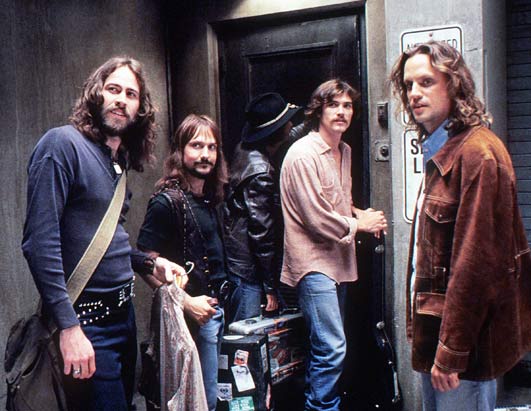Thirty-five years ago, a young director, by the name of Steven Spielberg, overcame many obstacles to deliver a pulse-pounding adventure story bent on redefining the notion of fear.
Steven Spielberg has made a wide assortment of films over his nearly forty years in cinema. However, one continual theme has been persistent throughout most of his stories. As he has noted: “I’ve discovered I’ve got this preoccupation with ordinary people pursued by large forces”.
In ‘Duel’ (1971), an ordinary man is terrorized by a large, grotesque oil tanker. In ‘Close Encounters of the Third Kind’ (1977), a small community is visited by aliens. In ‘JurassicPark’ (1993), visitors are introduced to dinosaurs. Ordinary human beings and their relationship to all things extraordinary is a typical fixture of Spielberg films, and it is this thematic element which helps to formulate many memorable characters and situations.
In ‘Jaws’, Spielberg exploits this thematic issue to create a memorable adventure film, while simultaneously constructing realism through incredible, in-depth character development. ‘Jaws’, on the outset, is a film about a shark terrorizing a small costal community, but it is also a film that analyzes society’s preconceived notions about fear, courage, class, masculinity, and geographical displacement.
One key attribute exploited joyfully by ‘Jaws’ is in its refusal to provide a visual composition for its attacking offender. As an adventure/horror film, ‘Jaws’ succeeds largely on the basis that the audience rarely captures a glimpse of the shark. The fact that the audience cannot see what or who is behind the attacks highlights a fear and paranoia, which conveys so much more than if the shark were to be viewed on a consistent basis.
There has always been an unspoken fear concerning the nature of a faceless enemy in a foreign land. Man has always been deemed fragile in the face of nature and the unseen, which goes to highlight the fact that society has always feared what they cannot see, explain, or define.
Obviously, the audience is aware that a shark is perpetrating these attacks, but since they are unable to verify their assumptions creates an uncomfortable fragile mindset. In perhaps the most frightening use of camera work in cinematic history, there are many shots which occur from beneath the surface of the water, eyeing potential victims swimming above. The audience takes on the perspective of the shark as it moves closer and closer to its intended prey, while being prodded along by a wonderfully written score by John Williams. These people are unaware of a potential attack, but the audience has become fully aware of what is about to occur. The unknown being stalked by the unknown is perhaps the most frightening capability of film. The audience is left in a vulnerable and defenseless position.
The idea of terror is wonderfully exploited by Spielberg, and it is clear that he succeeds in filming these types of situations. However, the film has become a classic for more then what he has been able to incorporate visually. Where Spielberg truly excels is in his focus on characters and their relationship to the world around them.
‘Jaws’ is considered one of the greatest cinematic masterpieces of all time. This is largely due to the time and concentration spent on the nature of its characters.
The films protagonist, Martin Brody (Roy Scheider), is a complicated and less then ideal ‘hero’. He is a fragile character. In a way, he is very much like a child, insecure and lacking. He has relocated himself and his family to the tourist laden area of Amity, and has struggled to integrate himself into the defined boundaries of this community. He is as much a tourist as the conventional visitor is. He is a sightseer in a foreign land.
As shark attacks continue to mount, Martin is unable to arrive at any sort of solution as to how to put an end to the chaotic terror gripping this ideal summer haven. It is at this point that the film averts its focus from spectacle, and instead becomes a picture obsessed with the development of character relationships.
For reasons unknown, in the final third of the film, Martin decides (even though he is afraid of the water) to venture out onto a boat with the gruff, working class Quint (Robert Shaw), and the middle class intellectual, Hooper (Richard Dreyfuss), to not so much track down and kill this evil and maniacal shark, but as to achieve some sense of maturation for his own self-worth.
‘Jaws’ is as much a film about adventure and terror as it is about self-evaluation and self-discovery. These thematic issues are truly explored during the sequences between the three men on the boat. In typical Western films and Australian films (now in Spielberg films), there has always been a necessary contradicting theme present. That is, the idea that although wilderness (land, sea, etc.) and civilization (suburbia, the city) are two opposing thematic elements, they are nonetheless crucial to one another and to the understanding of these complex stories. These two ideas cannot coexist, but yet depend on each other to create tension and understanding.
As a result, Martin leaves the confines of a safe environment, governed by rules and authority, and enters an uninhabited sea defined by lawlessness and connoting a Darwinian survival of the fittest type mentality. The fact that Martin enters into this uncivilized land is reflective of the man Martin desires to be. His journey away from the familiarity of civilization will truly test who he is as a person and as an individual.
As was the case with the character of David Mann in ‘Duel’, Martin Brody will have to summon the courage and strength to survive, while struggling to maintain a firm grasp on his psyche. He must learn to understand himself in an alien environment.
‘Jaws’ is a rich, methodically structured film that toys with its audience much in the way Alfred Hitchcock would toy with his. Spielberg seamlessly converts passive audience members into shockingly disturbed active participants. The film is filled with tension and delivers on spectacle, but should be remembered for its focus on character. An attribute which is sorely lacking in modern day thrillers.



